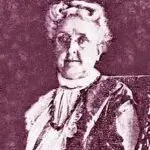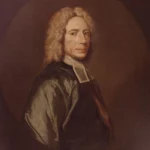The Point: Jesus’ death is the heart of the Gospel.
The Mockery: Matthew 27:27-31.
[27] Then the soldiers of the governor took Jesus into the governor’s headquarters, and they gathered the whole battalion before him. [28] And they stripped him and put a scarlet robe on him, [29] and twisting together a crown of thorns, they put it on his head and put a reed in his right hand. And kneeling before him, they mocked him, saying, "Hail, King of the Jews!" [30] And they spit on him and took the reed and struck him on the head. [31] And when they had mocked him, they stripped him of the robe and put his own clothes on him and led him away to crucify him. [ESV]
[27-31] “The decision that Jesus be crucified having been made, He was given over into the hands of the soldiers. They would look after Him until He was taken out to the place of execution and then carry out the sentence of crucifixion. While they were waiting, they amused themselves with some horseplay. The prisoner had been found guilty of being a king; very well, they would pay homage to the king in their own way. Matthew makes more of this mockery than does any of the other Evangelists. It is important for Matthew’s purpose, and he lets us know what the soldiers did. The governor’s soldiers were members of the Roman legion. Since Jesus was out of the control of the Jews, from this point on the Romans dictated all that was done. It is possible that Matthew is mocking these mockers. Matthew expects his readers to perceive not only that the soldiers are insensitive and cruel in their treatment of Jesus but also that the soldiers are ridiculous and thus wrong in their assessment of Jesus. The soldiers, apparently under the political authority of the Roman governor, are actually under the authority of the Jewish people whose orders they will carry out by crucifying Jesus. The soldiers took Jesus to that part of the governor’s headquarters where the soldiers were garrisoned. Matthew is saying that all the soldiers at the garrison gathered for some fun at the expense of the condemned prisoner. Their horseplay centered around the fact that Jesus had been convicted of being a king. Matthew is describing a highly ironical situation; the soldiers went out of their way to produce trappings of royalty as a means of ridiculing one who was to be crucified as a King, whereas He really was King in a fuller and wider sense than they had any idea of. They decided that His clothing was not suitable for royalty, so they took it off and replaced it with a scarlet robe. Since this kind of cloak was used by military officers, there would have been no great difficulty in getting one, perhaps an old one, discarded by an officer. The point of it was apparently that the color was somewhere near purple, the color of royalty. By getting a cloak of a color not quite that of royalty the soldiers were mocking Jesus’ claim to be a king. A crown was needed for a king, so these funny fellows got some thorny material and plaited a crown out of it. They pressed this on Jesus’ head, which would have both mocked His kingship and increased His sufferings. For a scepter they put a reed in his right hand. So they had all the outward trappings of royalty, but every one a piece of cruel mockery. They carried this further in that they knelt before Him, a parody of the respect routinely offered to a king. Only Matthew speaks of the reed; accompanied by the kneeling, it points to all the outward trappings of royalty. Evidently Matthew took this whole episode seriously; it was a dreadful part of what they had done to his Master. Mark and John join Matthew in telling us that they greeted Jesus with Hail, King of the Jews, but only this Evangelist includes the information that the mockery included the soldiers kneeling before their helpless captive. Their contempt for their captive is shown by the facts that they spit on him and took the reed and struck him on the head. There would have been no serious physical violence about this part of the incident, but there was contemptuous mockery of all that Jesus stood for. The soldiers make it clear that nobody should take seriously the bedraggled figure in their charge. How long the mockery lasted we do not know. But it could go on only until the time came for the crucifixion. When that time approached, the soldiers removed the cloak and put Jesus’ own clothes back on Him. The fun was over and the serious business was about to begin. They led him away to crucify him. There would not have been as many involved in the actual crucifixion as in the mocking (normally four soldiers crucified a man), but it would have included some of the same men.” [Morris, pp. 709-712].
The Death of Jesus Christ: Matthew 27:45-56.
[45] Now from the sixth hour there was darkness over all the land until the ninth hour. [46] And about the ninth hour Jesus cried out with a loud voice, saying, "Eli, Eli, lema sabachthani?" that is, "My God, my God, why have you forsaken me?" [47] And some of the bystanders, hearing it, said, "This man is calling Elijah." [48] And one of them at once ran and took a sponge, filled it with sour wine, and put it on a reed and gave it to him to drink. [49] But the others said, "Wait, let us see whether Elijah will come to save him." [50] And Jesus cried out again with a loud voice and yielded up his spirit. [51] And behold, the curtain of the temple was torn in two, from top to bottom. And the earth shook, and the rocks were split. [52] The tombs also were opened. And many bodies of the saints who had fallen asleep were raised, [53] and coming out of the tombs after his resurrection they went into the holy city and appeared to many. [54] When the centurion and those who were with him, keeping watch over Jesus, saw the earthquake and what took place, they were filled with awe and said, "Truly this was the Son of God!" [55] There were also many women there, looking on from a distance, who had followed Jesus from Galilee, ministering to him, [56] among whom were Mary Magdalene and Mary the mother of James and Joseph and the mother of the sons of Zebedee. [ESV]
[45-56] “All three Synoptists tell us that there was darkness over all the land from the sixth hour … until the ninth hour (or from noon until 3 p.m.). This cannot be explained as an eclipse, for it was Passover time and with a full moon an eclipse is not possible. We should understand the darkness as supernatural, leading up to the time when the Son of God breathed His last. It was not a local phenomenon, peculiar to Jerusalem and its immediate environs, for all three Synoptists tell us that it was over all the land. They clearly mean that it was not a natural phenomenon but the result of divine intervention. Darkness is associated with judgment in several places in Scripture, and it appears that we are to understand it here as pointing to God’s judgment on sin that is linked with the cross. Then at about the ninth hour Jesus died. Matthew and Mark both tell us that Jesus uttered a loud cry: Eli, Eli, lema sabachthani. The words, which seem to be a mixture of Hebrew and Aramaic, form the opening of Psalm 22 and are slightly different in Mark, where they are more clearly Aramaic. Since they are the only words Matthew and Mark record Jesus as speaking from the cross, they must be taken as very significant for these Evangelists (there are six other sayings, but they are all in Luke and John). Speaking loudly as He did, Jesus evidently meant the words to be heard. There is no great difficulty in translating Jesus’ words (as Matthew did for his non-Hebrew-speaking readers): My God, my God, why have you forsaken me? But understanding what they mean is a much more difficult problem. For some modern readers the words are so shocking and so different from anything Jesus said throughout His ministry that they feel it is impossible to accept them. But it is better to face the words honestly and to accept the fact that this was part of the putting away of sin. There must always be mystery here. We who are finite and sinners do not understand, and cannot even begin to understand, how evil appears to a holy God. It seems that in the working out of salvation for sinners the hitherto unbroken communion between the Father and the Son was mysteriously broken. It is surely better to accept this, knowing that we do not understand it fully, than to attempt some rationalization of the saying so that it becomes more palatable to the prejudices of modern Westerners. But abandonment is not the whole story. We must bear in mind that Jesus cried out, My God, my God. The human Jesus felt and gave expression to the abandonment, but He also retained His trust. In the anguish of godforsakenness Jesus still cries out in trust. The human Jesus might still be puzzled (Why). But He trusts, and we should not miss this aspect of the cry of dereliction. Despite the loudness of Jesus’ cry, it was not understood. In Hebrew the word for “my God” is not so very different from the word for “Elijah,” and some of those near the cross thought that Jesus was calling for Elijah. That prophet, of course, had not died in the usual way but had been taken up into heaven in a whirlwind [2 Kings 2:11]. He came to be viewed as a worker of miracles and one who might conceivably come to the help of the oppressed on earth. This does not mean that any of the bystanders held that Elijah would come to help Jesus, but only that they thought that Jesus might have hoped for help from the prophet. They were convinced that Jesus was in a situation from which He could not have escaped and could not escape; therefore it was only logical that He should appeal to some heavenly being to help Him. So far were they still from understanding what was happening before their very eyes. Perhaps with some confused idea that Elijah might respond and that if he did it would be well to be on the right side, one of them (which may mean one of the spectators or one of the soldiers) took action to help Jesus. The individual at once ran, showing that he was in haste to do what he could, and filled a sponge with sour wine. The sour wine was the ordinary cheap beverage that the soldiers used, and it would have been available there where the soldiers were at work. He put it on a reed and gave it to him to drink (and thus fulfilled Psalm 69:21). But giving a drink was a one-man affair. The others discouraged him; they preferred to see whose side Elijah was on before they started helping the crucified. They put in general terms the possibility that the prophet will come to save him. The way Matthew has put it, it seems that one person was trying to help the sufferer by giving him a drink and that the others were simply waiting to see what would happen. Both Matthew and Mark say that Jesus gave a loud cry, though neither indicates what He said. It seems likely that this is the cry that John reports immediately before Jesus’ death, It is finished [John 19:30]. If so, it points to the completion of the saving work that Jesus came to do. He had taught and He had healed, and He had set the example in His own life, and now He gave His life a ransom for many [Matt. 20:28]. With that loud cry Jesus yielded up his spirit. None of the Evangelists uses any of the usual ways of saying that Jesus died, and this may be part of the way they bring out the truth that there was something in His death that set it apart from all other deaths. There appears to be an element of voluntariness. Most of the crucified were in a state of absolute exhaustion at the end, but Jesus’ utterance of a loud shout does not comply with this and supports the view that to some extent His death was voluntary. To the end all four Evangelists refrain from trying to harrow our feelings; they tell their story simply and let the facts speak for themselves. Matthew’s characteristic And behold makes for a vivid introduction to what follows, as the Evangelist goes on to speak of some unusual happenings that accompanied the death of Jesus. He starts with the temple and speaks of the curtain, which appears to mean the curtain that separated the holy of holies, into which even the priests might not go (except the high priest, and he only one day in the year), from the holy place, into which only the priests might go (most interpreters accept this view, for the meaning is surely that by the death of Jesus the way into the holiest has been opened). Alternatively it might signify the curtain that separated the holy place to which priests had access from the adjoining court to which lay Israelite men were admitted. Either way the thought is of judgment on the temple, and Matthew is indicating that symbolically the way into the holy place was opened by the death of Jesus [see Heb. 10:19-20]. He emphasizes this truth by saying that the curtain was torn in two, from top to bottom, which indicates more than a minor tear. He is speaking of a bisected curtain, a curtain that no longer functioned to keep what lay on the other side of it a secret from all those outside. Religion was never to be the same now that Jesus the Messiah had died for sinners. This phenomenon, Matthew says, was accompanied by an earthquake, the earth shook, and the rocks were split. He leaves his readers in no doubt that what had happened was no minor event, but, in the literal sense of the word, earth-shaking. Up to the tearing of the temple curtain Matthew’s narrative has run parallel to that of Mark, but with the earthquake he is using material not found in Mark, or, for that matter, anywhere else. This continues with his reference to the opening of the tombs. This would not be surprising in an earthquake; indeed, it is not easy to see how it could possibly be avoided. Rock tombs were not like graves where bodies would be buried under mounds of earth. Normally these rock tombs were above the surface, and when the earth shook great strains would be put on them. Many would burst open in a large earthquake. But Matthew is not speaking of the natural consequences of a big earthquake, for he goes on to say, many bodies of the saints who had fallen asleep were raised. This information we find in none of the other Gospels, and indeed nowhere else at all. Matthew is telling his readers something about salvation. It is the death and resurrection of Jesus which triggers the resurrection of the saints – this is the new feature Matthew brings to the synoptic tradition. But he goes on to say that these saints were coming out of the tombs after his resurrection, so that their rising may possibly not be connected with the earthquake. So it is possible to understand the breaking of the tombs as occurring on Good Friday and the rising of the saints on Easter Day. In verse 54 Matthew returns to the time when Jesus died and gives us the reaction of the centurion and those who were with him. His associates are evidently the soldiers who had actually performed the crucifixion and who were watching the sufferer. The earthquake and its accompaniments impressed them, and they linked these happenings with Jesus, for not only were they filled with awe but they went on to say, Truly this was the Son of God! Even to these Gentiles it was clear that there was something in the death of Jesus, together with the attendant phenomena, that showed that He was not just another man. He had a special relationship to God, and it was important for Matthew that this be made clear. Matthew rounds off his account of the crucifixion by telling his readers of the presence of a group of women. Against the background of the failure of the male disciples the devotion and the courage of the women shine out. Matthew says that there were many of them, and that they were watching from a distance. It may not have been safe to go too close to that execution where Jesus’ enemies were in control, and it may not have been proper for women to be close to a crucifixion; they may also have chosen not to be associated in any way with the mockers. For whatever reason, they kept their distance, but they remained there to the end, demonstrating by their very presence their continuing loyalty to their crucified Lord. Matthew proceeds to mention three of them. He does not indicate why he picked these three, but evidently they had some importance for Matthew or his readers or both. Mary Magdalene is prominent in the resurrection narratives, but apart from that we know little about her. But obviously she was devoted to Jesus, and it is interesting that Matthew names her first. He has another Mary, this one the mother of James and Joseph, but unfortunately we have no other information about her or her sons. The mother of the sons of Zebedee has appeared before in this Gospel [20:20-21]. Since two of her sons, James and John, were among the Twelve, she was an important person among the followers of Jesus (she is apparently the Salome whom Mark mentions). These women then, and others, were faithful to the end and watched the last moments of their Lord.” [Morris, pp. 719-727].
Questions for Discussion:
1. Matthew took the mockery of Jesus by the Roman soldiers very seriously. Describe what the soldiers did to Jesus. Why did they mock Jesus in this way? Why was their actions so ironic, especially in light of the centurion’s confession in verse 54?
2. List the five miracles that took place at Jesus’ death as described by Matthew in verses 45-56.
3. Why did Jesus feel forsaken by God? Meditate on the tremendous significance of this statement for our salvation.
4. What is the significance of the torn curtain in the Temple?
5. What is Matthew telling us by describing how many of the dead saints were raised after Jesus’ resurrection?
References:
Matthew, volume 2, James Boice, Baker.
The Gospel of Matthew, R. T. France, Eerdmans.
The Gospel According to Matthew, Leon Morris, Eerdmans.
Matthew, David Turner, BENT, Baker.

















